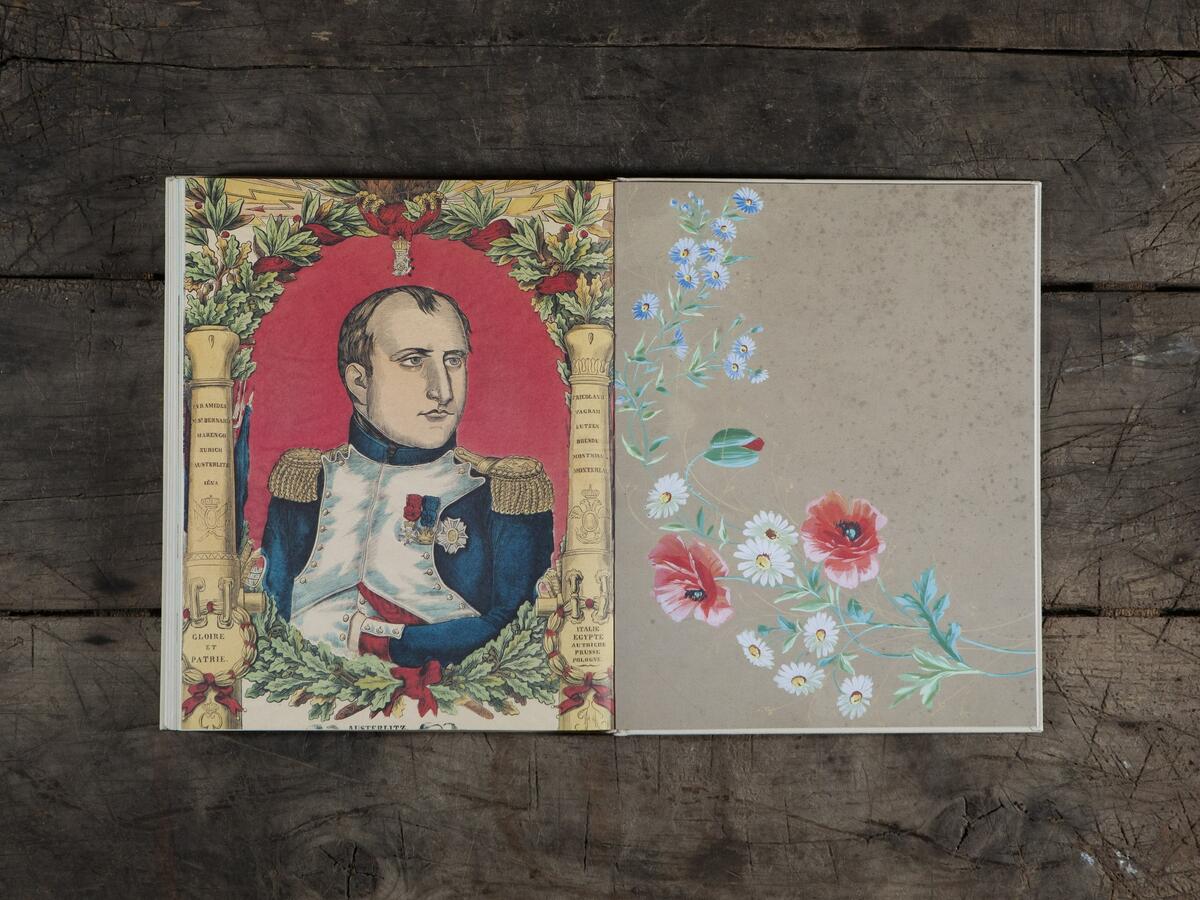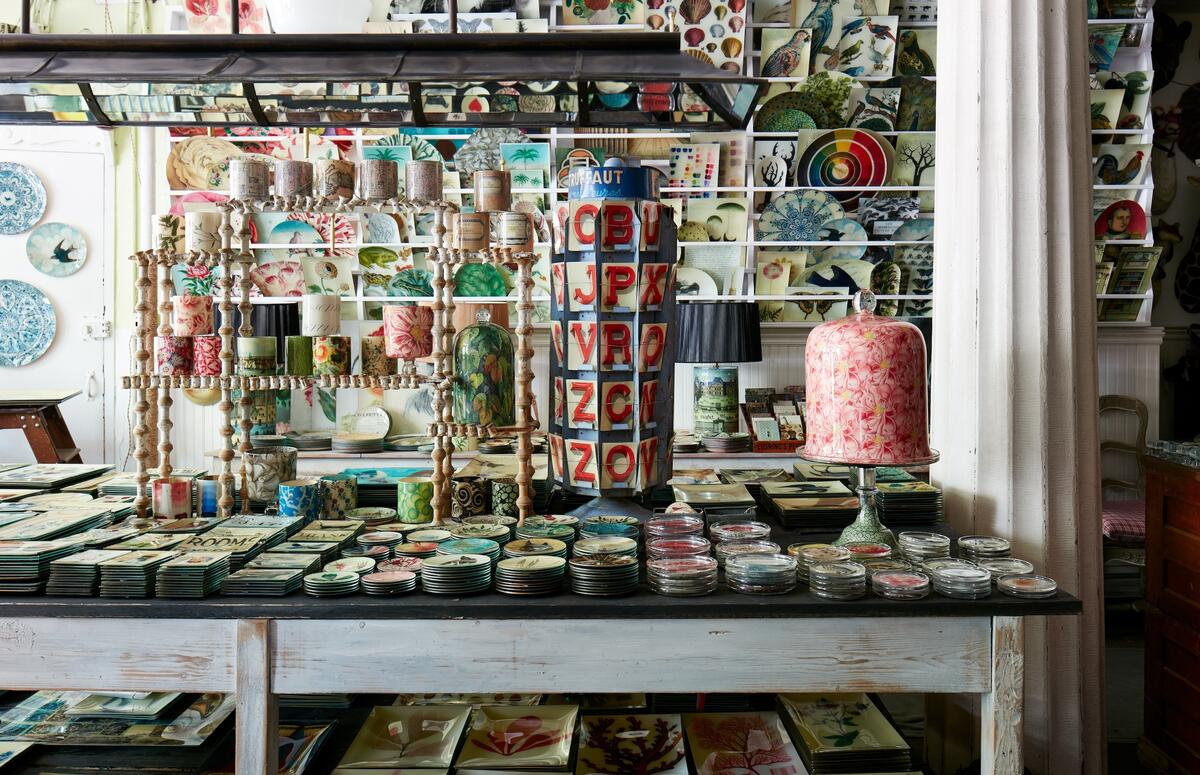In Business of Home’s series Shop Talk, we chat with owners of home furnishings stores across the country to hear about their hard-won lessons and challenges, big and small. This week, we spoke with New York–based artist and retailer John Derian.

Next week, he releases John Derian Picture Book II, a follow-up to his bestselling 2016 coffee table book. The tome offers 375 images from his personal collection of vintage art and prints in his distinctively whimsical style. It arrives 30 years after he first rented a storefront (and apartment) on East Second Street in New York’s East Village, which he transformed into his first shop in 1995. The same block is now the home of three of his eponymous stores, and he has another in Provincetown, Massachusetts.
Ahead, Derian discusses how his neighborhood has changed (or not), his long-standing relationship with Astier de Villatte, and why it’s probably for the best that he never had investors.
How did the new book come together?
I did my first book in 2016 with Artisan Books, and I became friendly with the publisher, Lia [Ronnen]. We’ve been brainstorming ever since, with ideas inspired by the first book. We did puzzles, notebooks, wrapping paper; we thought we would do stickers. But all along we’ve been saying, “When do we do book two?” Last year she said, “OK, let’s do it.” I took to my studio and looked at all the things that I love and thought, How can I not share these things? I am connected to them in an emotional way. I would really be sad if I couldn’t share them. We pushed and pulled it together, and here we are.
How did you go about collecting the images, and would you mind sharing one of your favorites in the book?
Well, the work that I do uses 18th and 19th century imagery, and I have a really big library. Some are in my current decoupage collection, some exist elsewhere—I get them from The Old Print Shop on Lexington, or book fairs, antique markets, flea markets, online, kind of wherever I am. I keep it organic; I just find things as I find them.
On August 13, SEO expert Maggie Swift will teach designers how to leverage SEO to increase online visibility, attract ideal clients and promote specialized services. Click here to learn more and remember, workshops are free for BOH Insiders.
I got all the images together, copied them to a book size, and shuffled them around for weeks and kept creating spreads that I liked, that were beautiful. There is one where the left side is Napoleon with this pink oval around him, and on the right side is some antique wallpaper. That one jumps out as one of my favorites.
Turning to the stores, how has the East Village changed since you set up shop?
I’ve always been a destination. I was creating the product in Cambridge, Massachusetts, then I came to New York and started working out of my apartment. I found a space downstairs, and then I just kept growing. The first place I lived was on Second Street, surrounded by four men’s shelters, and the neighborhood hasn’t really changed much. When I got to the block, it was a great little oasis in the East Village, and it’s kept its charm—except for this really ugly building across the street that may be an NYU dorm. I have three shops in a row and a studio on the same block, and we produce everything on Chrystie Street three blocks away. My world is kind of small. Even during Covid, I only got away for 10 days. I was like, Oh wait, there are all these web orders and I have no staff. So I went back to New York and started shipping.

You must be like a celebrity in the neighborhood. What are those relationships with your neighbors like?
I think that when I came to the block, I helped freshen it up a little bit. We planted a tree in front of my space, across the street, and next door. We’re in a nice universe. When I first moved here, there were three families that played together. The kids made the “Second Street Newspaper,” and there were snowball fights and snowmen. It was really magical, and I couldn’t have found a better spot. I think I was respected by everyone, too, because I was trying to keep things nice and clean, and the foot traffic that we get is not loud. They’re not drinking or hanging out. It’s just people shopping.
Is there a consistent John Derian customer? Are there any that might surprise us, like some Gen Z NYU students?
NYU kids don’t ever come in. We’re lucky because most of our customers know what they want. They come into the shop for specific things, or to be inspired, or to add to things that they already own. We don’t do a lot of handholding. They’re savvy. We talk about it in our stock meetings a lot, too, where I’m like, “You guys, we have the best, nicest customers.”
I’ve been here 30 years next year, and sometimes it’s freaky and I’ll remember weird things. This woman came in and said, “I bought a pair of—” and I said, “Yeah, you got that pair of sofas in 1996.” I’m in and around a lot more in the last four years, just keeping things alive with Covid and trying to restaff, because a lot of people didn’t come back. I can’t get away too long, because I freak out that things need attention.
How has operating an independent business in New York changed over these three decades? Are there certain policies or infrastructures that make it easier or harder?
I feel like so many landlords and banks have these bad situations where things can’t be rented for a certain price, and then they sit there at an inflated price that they were then able to subtract from their taxes. There seem to be a lot of spaces that could be rented but aren’t, and a lot of creative people who can’t express themselves in retail because they can’t afford it. I was on Orchard Street on the Lower East Side recently, and I was really happy to see a number of cool, exciting small shops. So I think it just has to do with banks and landlords, and I’m not really sure how that’s ever going to change. A lot of stores that I knew and loved did disappear, but there are still a few of us out there believing in it.

You mentioned staffing during Covid. How have you found your in-store staff?
Luckily, in this moment, I have a really great staff. They’re really high-functioning. There was definitely a generational shift over the last 10 years where people just weren’t working in the same way, and it was hard to adjust. It seemed like it was all about me, and I couldn’t figure out why things weren’t working, but then I discovered that it was more generational. It seems to be OK now. It’s been easier to find staff for the last year.
How have you chosen your partnerships over the years?
I’ve been lucky that a lot have been organic. I sold the white pottery made by Astier de Villatte for a number of years, and then they became a little friendlier with me and started selling my things. After five years of this, they said, “We should do a collaboration.” It was exciting to actually finally make something that I could use. I love what I do, but I am also function-based and [appreciate] the fact that you can use their things and put them in a dishwasher, while mine are more decorative. That was a fun collaboration that continues. And I love the owners [Ivan Pericoli and Benoît Astier de Villatte]. They’re like brothers, and if I’m in Paris or they’re here, we’re hanging out. We have a similar visual sense, and they have an affinity to the 18th century.
My collaboration with Target was sort of an accident; I have a friend who is an illustrator agent and she was on a project with them and suggested, “What about John Derian?” They’ve been super nice to work with and really open to the quirkiness of my world, and using nice materials like ceramic, linen and cotton, so it’s been good.
What is your own favorite product category in your store?
The ceramics are my favorite.
And what about your favorite kind of day at work? What are your preferred tasks?
Rearranging, puttering and designing things are the things I like to do. When we used to do trade shows and we’d have to set up, and people were waiting for me, I’d get stressed and have to remind myself, “This is what you like doing, so enjoy it!”

If you could send a message to the man launching this business in 1989, what would you say?
I could say, “Well, you might want to get an investor or a loan.” Because I took the space and I thought I would just sell plates in the store and that would be how I paid my rent. I had a few antiques, and as I sold them, I had some more money to buy more things. It just kept growing, but if I had money, it could have gone a little faster.
But everything was so organic. I went so slowly, but it was better for my brain because it was me running it. I’m not a businessperson, so I’ve kept it pretty simple. Or I’d [tell myself], “Believe in what you’re doing.” You can point to a thing you’ve made on the table and say, “I’m an artist, and this is art.” If you believe in it, people will believe in it too.
This question has come up so much in the home space since the pandemic, but how did you manage not to grow too quickly? Or is that the kind of decision-making you can only see in hindsight?
Possibly. But like I said, I really have no business education. There was a time, in 2008 when Martha Stewart came out of prison, when [she and her team] thought maybe they might invest in my company, but then the economy crashed. I’m kind of glad nothing happened, because I liked having all the—I don’t want to say control … but I like that my vision is what I believe in, and not watered down.





























